The Harvest: This Week in Rural China – Dispatch No. 16 (4 April 2025)
Burial reforms, the ‘Two New’ policy’s rural impact, volunteer efforts, ancient tree protection, and the battle to preserve black soil.
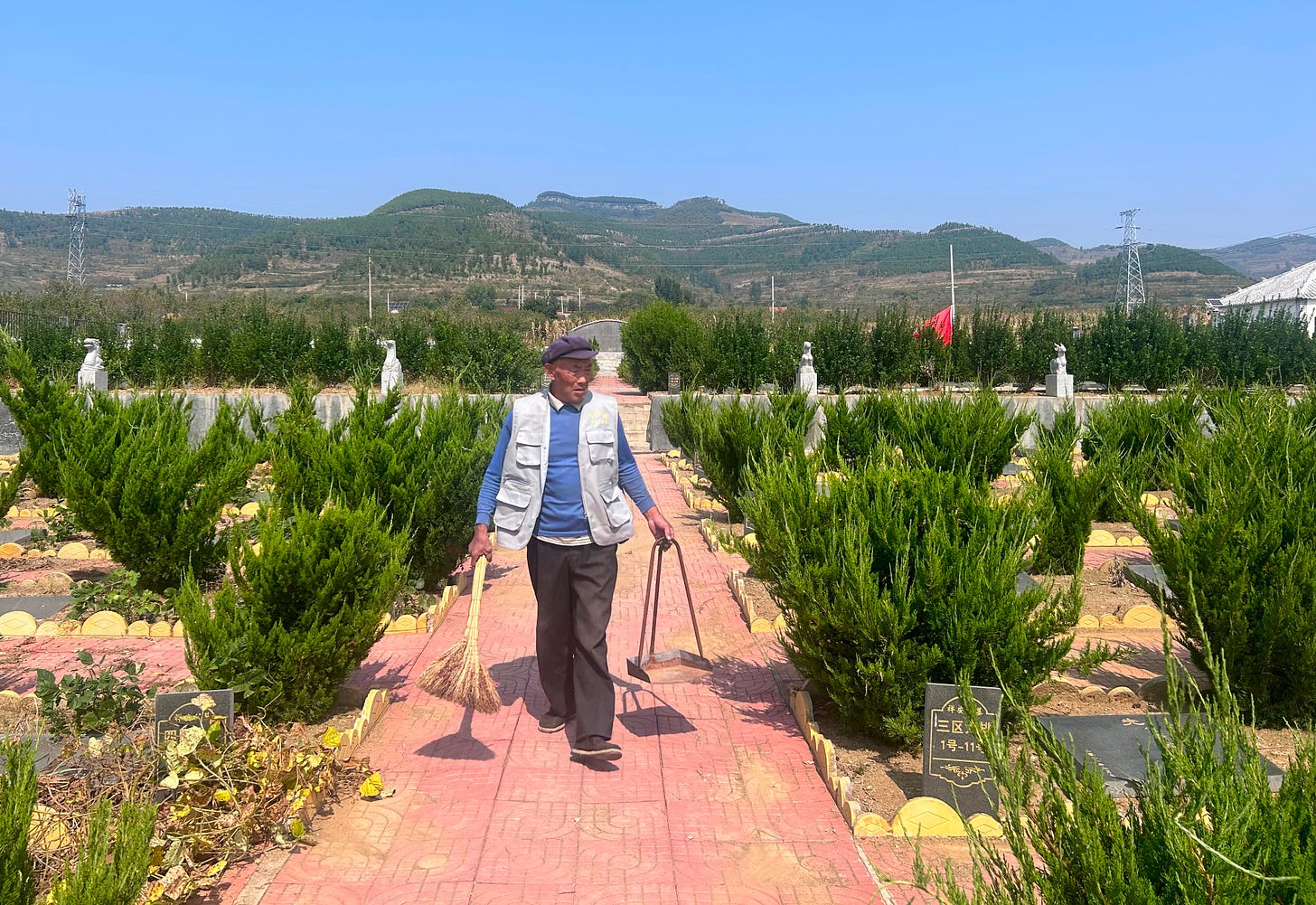
This week, The Harvest brings you a digest of the key developments shaping rural China:
China’s ‘Two New’ Policy: A Blueprint for Revitalising Rural Economies
Rural China’s New Approach to Burial: A Step Towards Ecological and Social Reform
Bridging the Gap: Volunteer Efforts in Rural China and the Need for Long-Term Solutions
China’s Ancient Trees: Balancing Preservation and Progress in Rural Hunan
China’s Race to Save Its Black Soil: A Growing Challenge for Agricultural Sustainability
I always welcome your insights, as your feedback helps shape the direction of every dispatch. Please share your thoughts in the comments below or reach me at nathan@thisweekinruralchina.com.
As always, The Harvest remains free for all readers. If you find value in these dispatches and want to support the continued work behind them, consider becoming a free or paid subscriber. Your support helps sustain this project and ensures we can continue publishing consistently.
Now, let’s dive into this week’s stories:
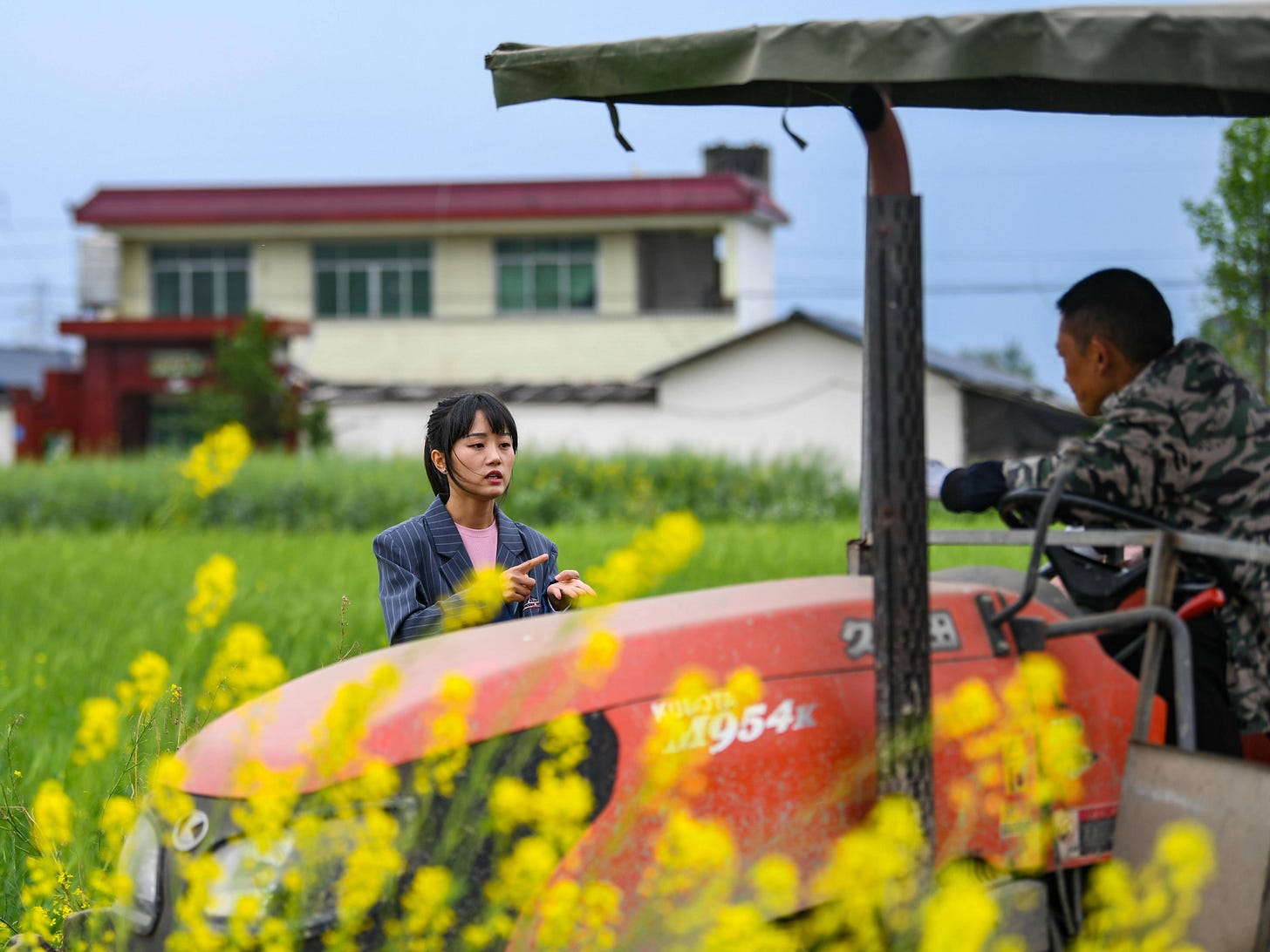
China’s ‘Two New’ Policy: A Blueprint for Revitalising Rural Economies
This week, state media has intensified its focus on China’s “Two New” policy (两新政策), highlighting its pivotal role in economic recovery following the pandemic and addressing global economic challenges. For rural China, this policy serves as a key driver of local economic revitalisation, boosting consumer confidence and encouraging sustainable long-term growth.
A cornerstone of the policy is the “old-for-new” trade-in initiative, which allows rural households to exchange outdated vehicles, appliances, and electronics for more energy-efficient models. In the first two months of 2025 alone, over 107 million vehicles were traded under this scheme, bringing tangible benefits to rural areas. While urban centres have historically benefited from such programs, rural China is now seeing a similar lift as new electric vehicles (EVs) and smart appliances become more accessible, modernising homes and fostering a greener consumer culture.
The policy also helps rural areas leapfrog outdated technologies by promoting the adoption of EVs and energy-efficient appliances, supporting China’s broader environmental goals. Rural regions, which have long relied on older, more polluting vehicles, are now transitioning to cleaner and more affordable transportation alternatives, particularly electric bicycles and farm vehicles. This shift has far-reaching implications for both sustainability and rural mobility.
But the “Two New” policy is not solely about consumption. It also stimulates investment in rural industries, particularly in electronics, agriculture, and food processing. By supporting new equipment and technology, the policy is modernising rural manufacturing, driving productivity and sustainability. In the first two months of 2025, rural industries experienced an 18% increase in equipment investment, with notable progress in agriculture, including the transition from facility farming to grain processing. These upgrades are breathing new life into rural businesses, enabling them to meet the rising demand for sustainable goods.
All of this supports China’s broader strategy for post-pandemic economic resilience and food security. By directing resources into rural communities, the government is laying the foundation for long-term growth, ensuring that even remote areas share in the nation’s economic recovery. A further knock-on effect might be the increased productivity of land farmed with modern machinery and vehicles.
The “Two New” policy is helping to transform agriculture from a historically underdeveloped sector into a vital engine for growth, improving living standards while aligning with global sustainability and circular economy trends. As China continues to invest in its rural future, it sets an example on how rural areas can play a part role in economic recovery and environmental responsibility.
Rural China’s New Approach to Burial: A Step Towards Ecological and Social Reform
In recent years, rural China has begun rethinking traditional burial practices as local governments introduce solutions to address land scarcity and changing cultural norms. By 2025, more than 80,000 public cemeteries have been established across the country, many embracing eco-friendly and cost-effective burial methods. This shift is closely aligned with the government’s push for “ecological civilisation” (生态文明) and efforts to reform funeral and burial practices.
Traditionally, burial plots in rural areas encroached on arable land, diminishing available agricultural space. The introduction of public cemeteries has alleviated this pressure by offering space-efficient grave plots, which can accommodate more than twenty graves in the same space traditionally used for one. This transformation not only frees up valuable farmland but also helps reduce the financial burden of funerals, which in the past could cost families upwards of 25,000 yuan. In many areas, these costs are now fully subsidised by the government if using public cemeteries.
These reforms also reflect broader rural policies aimed at balancing ecological and cultural needs. As part of this shift, some regions, like Hubei Province, have introduced eco-friendly burial practices, including forest burials that utilise natural woodlands while providing a sustainable resting place for the deceased. These initiatives contribute to land conservation while maintaining respect for traditional beliefs about honouring the dead.
Despite the progress, resistance remains. Some rural residents continue to favour traditional burial practices, arguing they more fully honour ancestors. This has sparked debate over the government’s role in shaping such deeply personal and culturally significant practices. While the immediate financial relief is clear, the long-term adoptability of these reforms is a point of contention. Whether the public welfare cemeteries can maintain their ecological, cultural, and financial balance without creating further bureaucratic hurdles is yet to be seen.
These evolving burial practices go beyond addressing land scarcity and economic pressures; they represent a cultural shift in rural China. By blending ecological responsibility with respect for tradition, they also underscore the growing role of state intervention in matters traditionally left to rural families, in contrast to urban areas, where such decisions have long been more heavily regulated. This shift is poised to shape the future of rural communities for generations to come.
Bridging the Gap: Volunteer Efforts in Rural China and the Need for Long-Term Solutions
This week, People’s Daily highlighted the work of Liu Shengtao, a graduate volunteering in Dongping, a rural village in Guizhou province, as part of the Western China Volunteer Program (西部计划). Liu’s efforts, including running the “Hope Classroom” (希望小课堂) — a weekend after-school program for underprivileged children — reflect the core aims of the Western China Volunteer Programme, an initiative designed to address the rural education gap through the contributions of young university graduates.
Liu’s work, providing free tutoring and extracurricular support to children, is portrayed as a model of youthful idealism, with volunteers celebrated for their dedication to closing the educational gap in China’s rural areas. However, while these individual success stories are compelling, they often overlook the deeper, systemic issues that persist in rural development.
The Western China Volunteer Programme, which began over two decades ago, is just one of many government initiatives addressing the vast disparity between urban and rural education provision. While such programs provide valuable short-term relief, they do little to address the structural challenges facing rural education. Volunteers, typically recent graduates, often return to urban centres after only a few years, leaving behind a temporary impact, having only filled the gap on a voluntary basis.
True progress requires more comprehensive solutions, such as better funding for schools, improved infrastructure, and long-term investment in local economies to retain skilled workers — something some regions, such as Chongqing, have been working to address. Only with these sustained efforts can rural communities evolve from dependency on external support to self-sufficiency, ensuring that the “Hope Classrooms” of today lay the foundation for thriving, independent communities in the future.
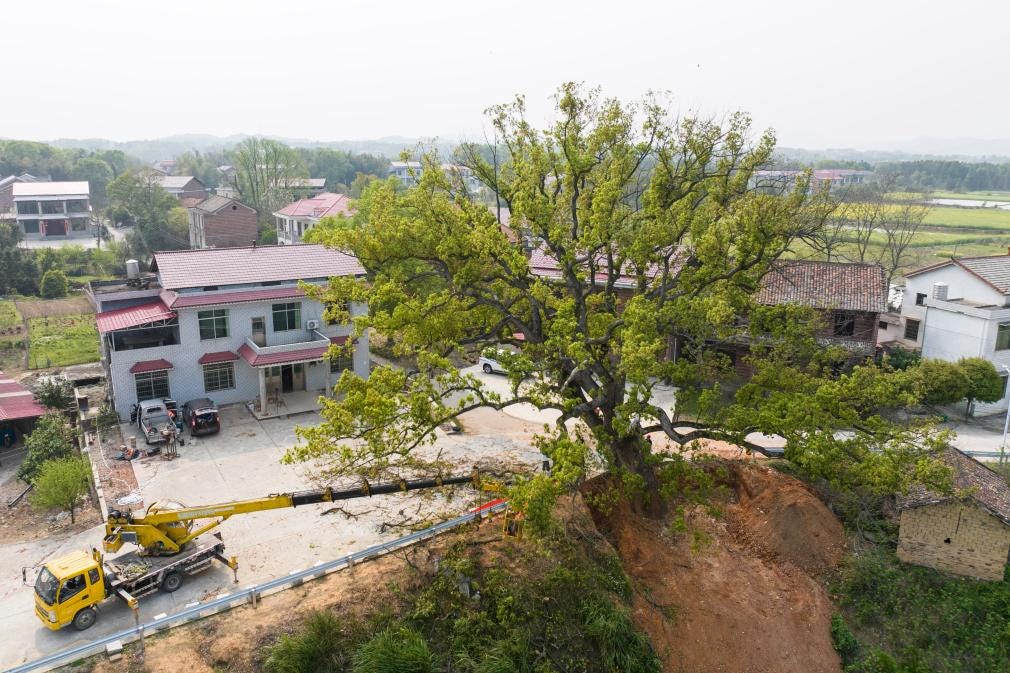
China’s Ancient Trees: Balancing Preservation and Progress in Rural Hunan
In the rural town of Huaihua, nestled in the heart of Hunan Province, a centuries-old camphor tree is undergoing urgent treatment after construction work on a local flood embankment left it severely damaged. The tree’s roots were compromised when the flood protection project disrupted its root system in 2021. With nearly 60% of its roots now damaged, experts have stepped in to help preserve the tree, undertaking a surgical operation that includes soil aeration, nutrient injection, and careful pruning of its dead branches. The operation, costing around 30,000 yuan, aims to help the tree recover over the next year, though its long-term survival is far from guaranteed.
This case in rural Hunan is part of a more significant, nationwide effort to preserve China’s ancient trees, many of which are threatened by rapid urbanisation and unchecked development. The camphor tree’s struggle is timely, as it comes just as China’s Regulations on the Protection of Ancient and Notable Trees (古树名木保护条例) officially came into effect on 15 March 2025. These regulations establish a legal framework to protect trees that are at least 100 years old, with those over 500 years old receiving the highest level of preservation. The law signals China’s growing—but still selective—commitment to environmental protection and cultural conservation.
Localised efforts, such as the one in Huaihua, are now under the spotlight as rural communities grapple with how to enforce the new protections while continuing to develop. The issue is not just ecological but cultural—many of these ancient trees are deeply intertwined with local heritage, serving as spiritual symbols and community landmarks.
The enforcement of these new regulations, however, is fraught with challenges. Local authorities in rural areas, where economic development often takes precedence over conservation, face a challenging task in balancing the pressures of urbanisation with the need to preserve these living monuments. While the central government has taken steps to establish a formal legal framework for conservation, the success of these efforts will ultimately depend on how they are implemented in the field.
In the case of the camphor tree in Huaihua, its survival—along with that of many other ancient trees across China—will hinge on whether these new regulations can take root at the local level, where development and preservation often clash. For more on the challenges facing ancient tree preservation in rural China, please see Dispatch No. 8 (6 February 2025)
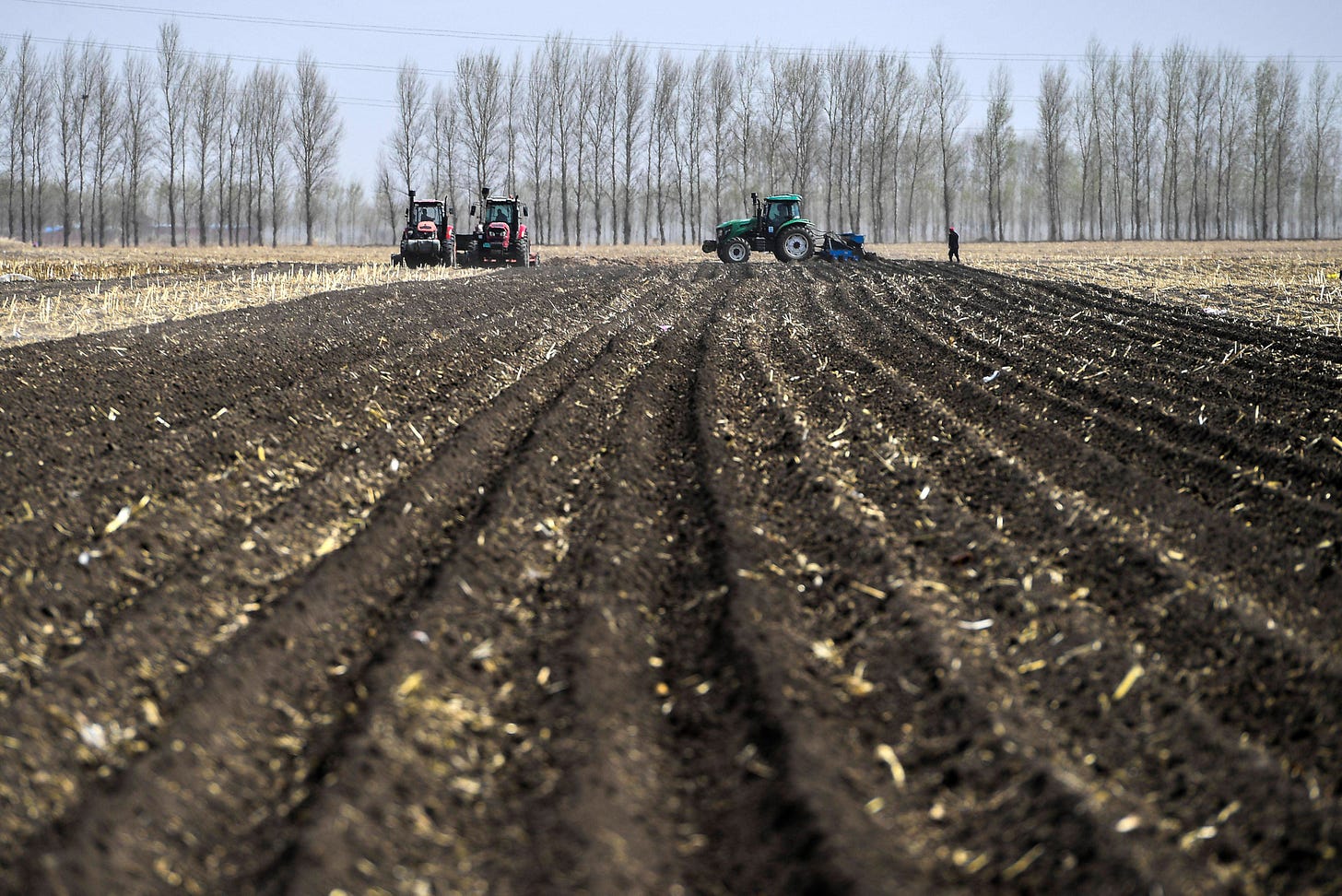
China’s Race to Save Its Black Soil: A Growing Challenge for Agricultural Sustainability
In the northeastern province of Liaoning, the race to preserve China’s precious black soil (黑土地) is intensifying. The provincial government has announced plans to implement protective farming practices (保护性耕作) on 13.7 million acres of land in 2025, highlighting the country’s growing concern over its agricultural future. This is a continuation of China’s broader “Black Soil Protection” (黑土地保护) initiative, which aims to address soil degradation and ensure long-term food security.
Liaoning’s black soil, known for its rich nutrients, is a crucial component of China’s food security strategy. It is responsible for producing a significant portion of the country’s grain, and its farmers are some of the wealthiest in China. Yet, decades of intensive farming, coupled with rising environmental challenges, have put these fertile soils at risk. To combat this, the Chinese government has adopted a series of advanced farming techniques, such as crop residue covering and minimal tillage (免耕播种), which help retain soil integrity and prevent erosion.
Liaoning’s plans are not just about preserving the soil but also about enhancing productivity. The province aims to build 18 counties with comprehensive black soil protection, 57 high-standard application bases at the county level, and 158 at the village level. These bases will serve as hubs for demonstrating best practices in soil conservation and management.
This initiative is part of China’s broader “rural revitalisation” (乡村振兴) policy, which seeks to modernise agriculture while ensuring its sustainability. The central government is also providing financial backing, with a per-acre subsidy for high-standard application bases. These efforts aim to increase the country’s food production capacity while ensuring that future generations inherit healthy, productive land.
For China, black soil is more than just a resource—it is a lifeline. As the nation navigates the dual challenges of climate change and rapid industrialisation, the push to protect its agricultural foundation could prove to be one of its most critical undertakings.
Between Mountains and Waters - Photo of the Week for 4 April 2025
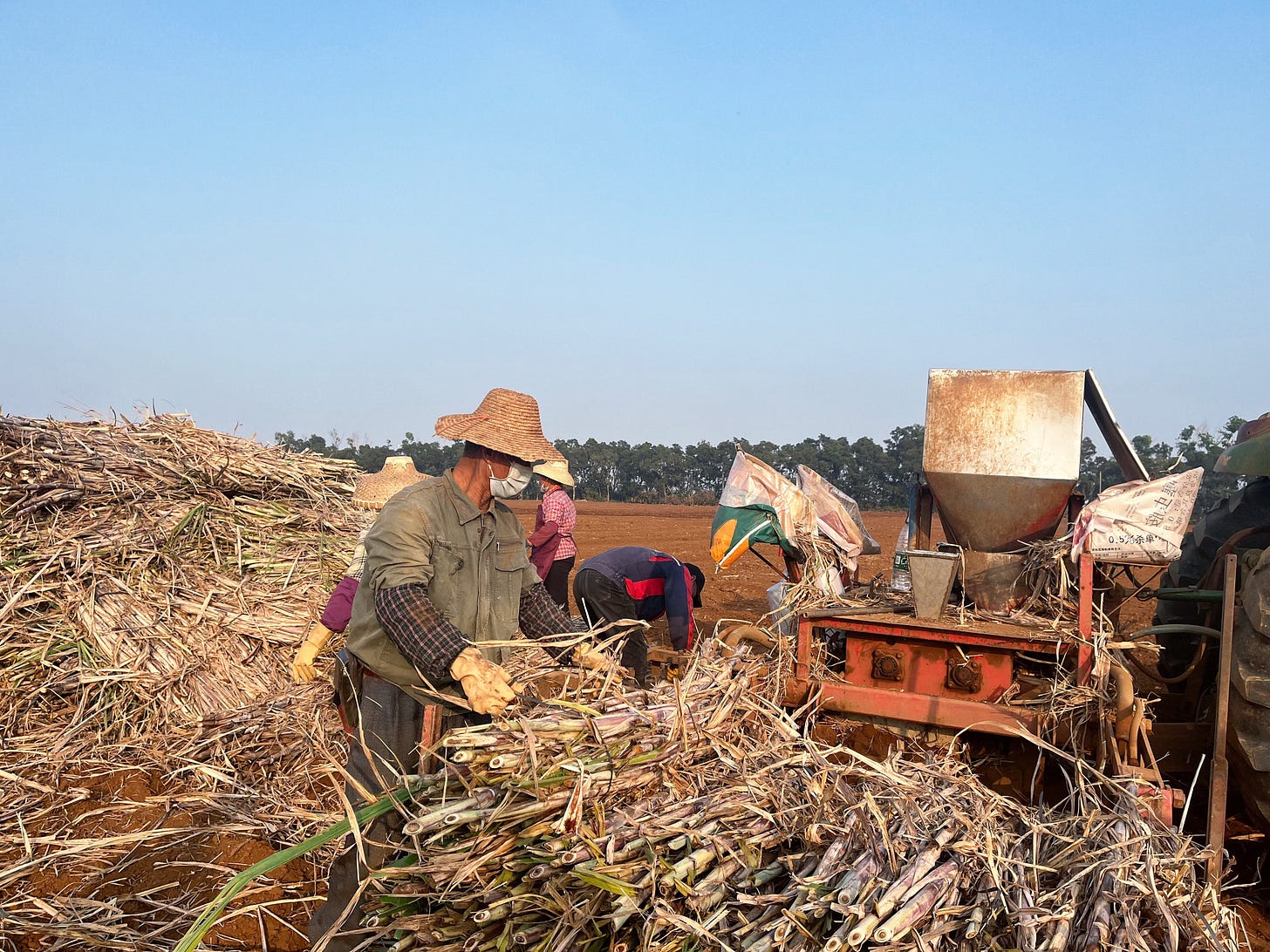
The sugarcane industry in Guangdong Province, particularly in Zhanjiang, plays a crucial role in preserving the region’s rich dessert culture, which spans from simple ingredients like red bean paste to over 400 variations of sugar water used in factory-manufactured foods. The favourable natural conditions and farming practices in Guangdong have led to higher yields and better sugar content, making it a highly productive region for cultivation. The sugarcane milling season runs from late November to March, with the harvest typically taking place in March. During the 2023/24 milling season, 17 sugar mills in the region processed 5.6 million metric tons of cane, resulting in 528,300 metric tons of sugar!





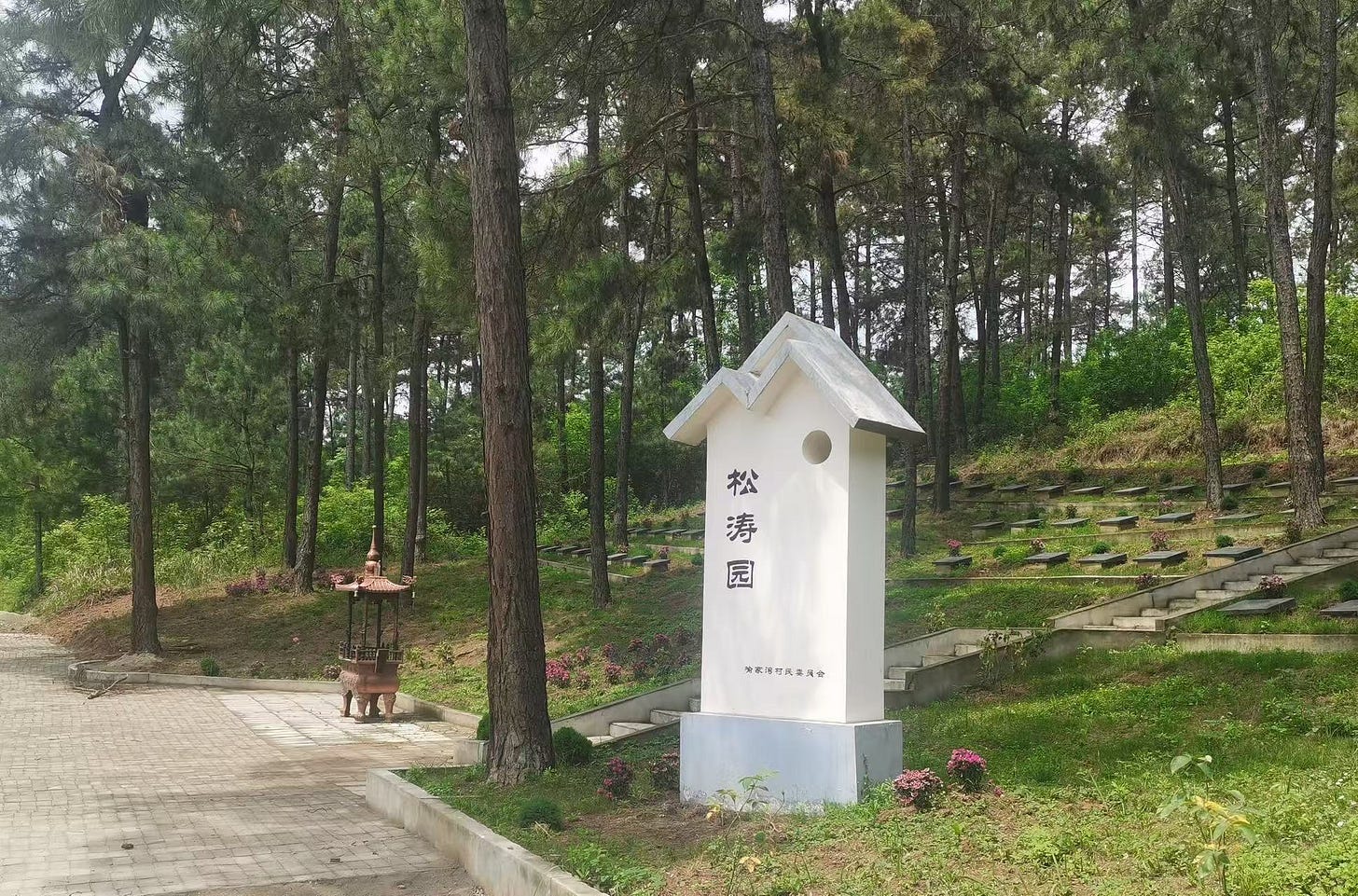
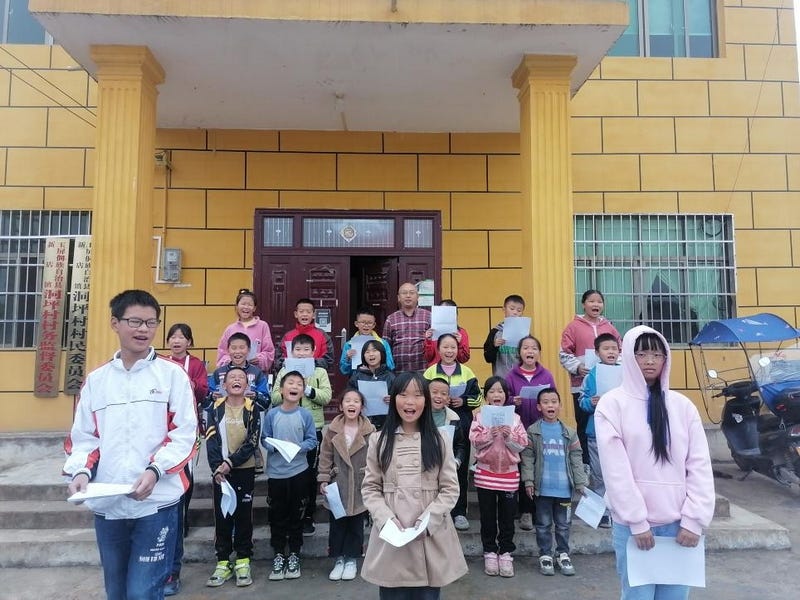
More than ever, I notice preserved trees on my trips, some 1000 years old. Tagged with names and dates. Applaud that!